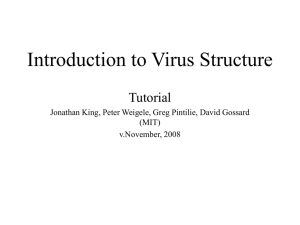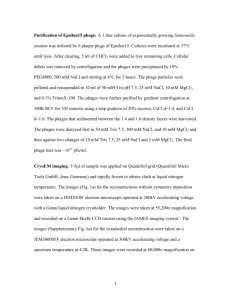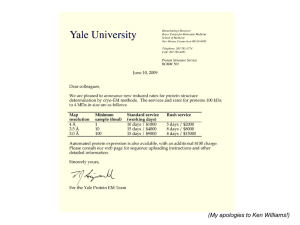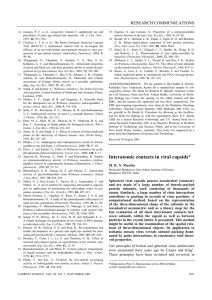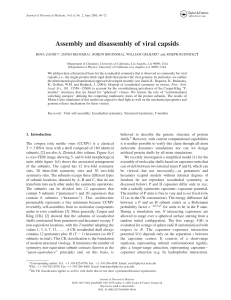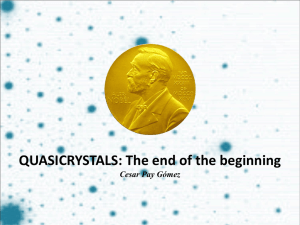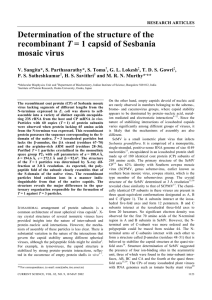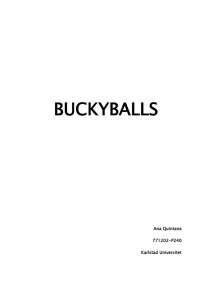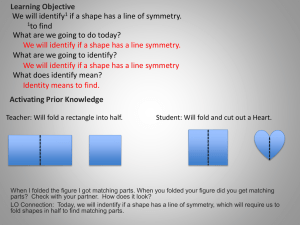Intro to Cryo-EM and Icosahedral Symmetry
advertisement
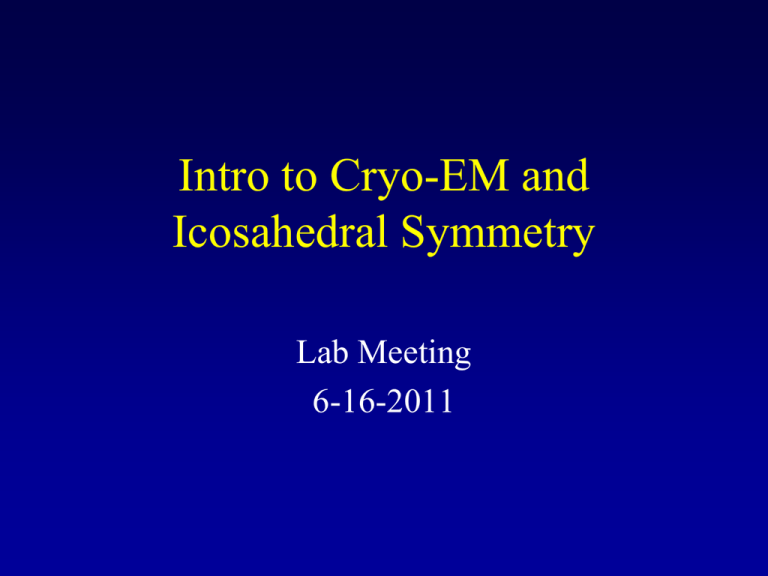
Intro to Cryo-EM and Icosahedral Symmetry Lab Meeting 6-16-2011 Why EM? Adapted from review by Subramaniam in Current Opinion In Microbiology (2005), http://electron.nci.nih.gov/html/home.html Developments in electron microscopy have generated a renaissance in biological imaging, allowing researchers to visualize 3D structures of biological entities at the molecular scale including viruses, protein complexes and individual proteins. Why Cryo-EM? Negative Stain Curr Protoc Protein Sci. 2005 Dec;Chapter 17:Unit 17.2 Advantages • high contrast • good signal-to-noise ratio • quick and easy to learn • simple to apply • resistant to radiation damage • good for small objects (proteins) Disadvantages • distortion due to dehydration on support • artifacts due to staining pattern • high background from surrounding stain • distortions due to ionic strength and pH • limited resolution • surface contour only Plunge Freezing Curr Protoc Protein Sci. 2005 Dec;Chapter 17:Unit 17.2 Physiology 21: 13-18, 2006 Advantages • preservation of native structure • always in solution and hydrated • high resolution • internal details revealed Disadvantages • sophisticated equipment • learning curve • low signal-to-noise ratio • usually requires >200kD Cryo-EM suite and trained microscopist operational in Hershey by Feb 2012 Combining methods for pseudo-atomic models Cryo-EM + X-ray Sampling of Icosahedral Virus Cryo-EM Reconstructions (1999) EMDB Stats http://www.ebi.ac.uk/pdbe/emdb/statistics.html Current Structures 26Å EMBO J. 2011 Jan 19;30(2):408-16. 4.3Å EMBO J. 2011 Jan 19;30(2):408-16. What did we learn with higher resolution? Highest Resolution in EMDB: Helical – 2.8 Icosahedral – 3.1 Significance The value of the results produced by 3D reconstruction of viruses from cryo-EM must be considered in terms of its contribut to our understanding of viral structural biology. Icosahedral Symmetry • Since a virus structure is optimized for the propagation of its genome,it is advantageous to make a large shell with a small amount of information devoted to structural components. • An icosahedron is an isometric structure with 12 pentagonal vertices and 20 triangular faces. Icosahedral Symmetry • Any icosahedron has a defined set of exact symmetry elements: – 6 five-fold axes through the 12 vertices – 10 three-fold axes through the 20 triangular faces – 15 two-fold axes through the edges • This means that the complete structure can be generated by taking 1/60th, called the asymmetric unit, and operating on it with the symmetry elements. Quasi-equivalence • Simplest icosahedral structure: 60 identical subunits interact identically • Caspar and Klug: if >60 subunits interact to form closed shell, all subunits cannot have identical environments. • They are quasi-equivalent because their environments were similar but not identical – bonds between subunits in a capsomer are stronger than bonds http://www.virology.wisc.edu/virusworld/tri_number.php Building an Icosahedron • To make isometric shell, begin with a flat, hexagonal net. • To curve the net and generate a closed structure, convert some of the hexagons to pentagons. http://www.virology.wisc.edu/virusworld/tri_number.php Example http://www.cgl.ucsf.edu/chimera/experimental/flatten_icosahedron/flaticos.html Triangulation Numbers • The larger icosahedra have hexagons between the pentagons and can be visualized as replacing the original triangular faces with larger ones formed from equilateral triangles. • The number of triangles replacing the original one is the triangulation number. Triangulation Numbers • T = h2 + hk + k2 • Original theory of quasi-equivalence: number of different environments should equal the triangulation number – a T=4 virus would have four different subunit environments and 60T (240) subunits – 10(T-1) hexamers plus 12 pentamers – not always strictly maintained Examples Handedness Spherical viruses with T numbers greater than or equal to 7 are skewed. They are therefore described as either right- (dextro) or left- (laevo) handed. Examples Useful Websites • http://www.virology.wisc.edu/virusworld/tri_number.php • http://www.nlv.ch/Virologytutorials/Structure.htm • http://web.uct.ac.za/depts/mmi/stannard/virarch.html • http://viperdb.scripps.edu/icos_server.php
